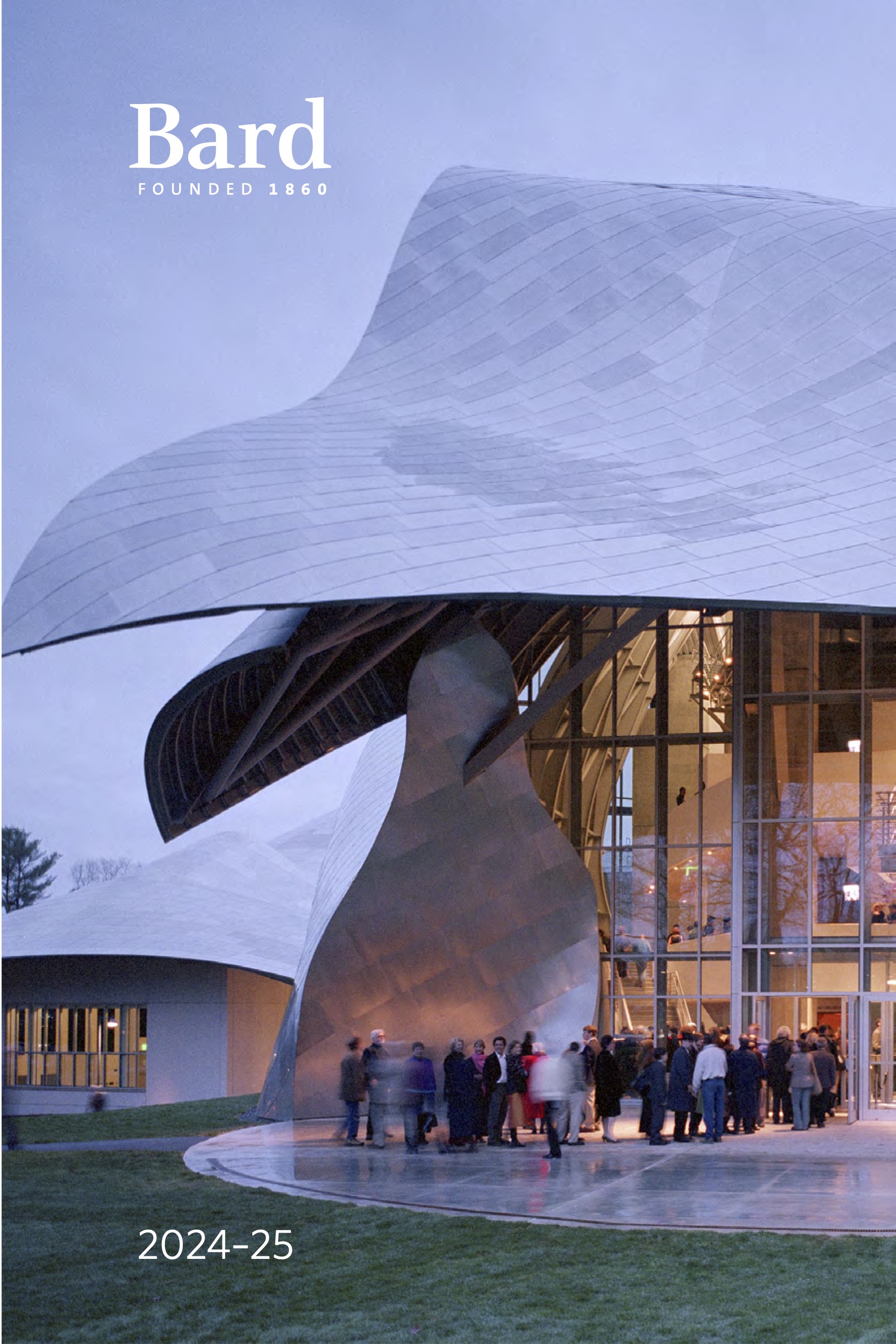
- Mission
- Acknowledging Bard's Origins
- History of Bard
- Learning at Bard
- Admission
- Academic Calendar
- Division of the Arts
- Division of Languages and Literature
- Division of Science, Mathematics, and Computing
- Division of Social Studies
- Interdivisional Programs and Concentrations
- The Bard Conservatory of Music
- Bard Abroad
- Additional Study Opportunities and Affiliated Institutes
- Civic Engagement
- Open Society University Network
- Campus Life and Facilities
- Graduate Programs
- Educational Outreach
- Levy Economics Institute of Bard College
- The Bard Center
- Finances
- Scholarships, Awards, and Prizes
- Faculty
- Honorary Degrees and Bard College Awards
- Boards and Administration of Bard College
- Bard College Contact Information
- Bard Campus Map and Travel Directions
Bard College Catalogue 2024–25
Additional Courses in the Sciences
Courses listed under this heading are introductory courses in branches of science that do not fit into the six divisional programs, or that approach the study of science from historical or philosophical points of view.
Reinventing the Wheel: The Art and Craft of Science
Science 112
CROSS-LISTED: MEDIEVAL STUDIES, STS
When Antonie van Leeuwenhoek (1632–1723), a Dutch cloth merchant, looked through a powerful magnifying lens he had made in his shop, he was shocked to find tiny “animalcules” living between his teeth. He is now considered the “father of microbiology.” His story, like many others from the history of science, is about hands-on investigation. He got his hands dirty. Students in the course get their hands dirty, too, as they reconstruct various experiments and discoveries, including heat’s effect on iron and the physiology of the heart
and eye.
Paints and the Examination of Paintings
Science 123
Students investigate the composition of pigments, dyes, and paints; the chemistry underlying selected techniques (e.g., Attic vase and fresco painting); and scientific methods for examining paintings. As light, atoms, and molecules are central to paints and techniques for examining paintings, the course begins with these foundational topics. Laboratory work includes synthesis and analysis of pigments and dyes, and preparation of binders and paints.
Photographic Processes
Science 125
Topics covered range from the chemistry of silver and nonsilver photographic processes to the physics of CCD cameras. Laboratory work emphasizes the chemical transformations involved in making gum dichromate prints, cyanotypes, blueprints, salted paper prints, and black-and-white silver emulsion prints.
Learning about Learning
Science 127
What is learning? How can we learn more quickly? What happens in our brains when we learn? This course offers an experimental investigation of what influences the depth and quality of learning. A major focus is on student-generated, quantitative experiments designed to test ideas about learning.
Monitoring Environmental Change
Science 129
DESIGNATED: OSUN COURSE
This course introduces the practical aspects of environmental monitoring while exploring the related climate change and public health connections. Case studies cover worldwide programs (e.g., the UN Global Environment Monitoring System program) and local initiatives. Online course content and activities guide students from across the Open Society University Network through the process of identifying potential local climate-related challenges. Students design an environmental monitoring study, resulting in a project proposal. Selected proposals will be eligible for support as pilot projects through the OSUN Community Science Coalition program.
The Life and Death of Stars
Science 143
Whether faint or bright, stars look like unchanging dots of light in the night sky, but stars are not all alike and they do change. They are born, live, age and die, often spectacularly. Everything we know about stars, e.g., temperature, luminosity, size, mass, and composition, comes from the light they radiate. This course begins with the closest star, the Sun, before considering different types of stars and their evolution. Labs consists of working with astronomical data and spreadsheet calculations.
Physical Science after Newton
Science History and Philosophy 223
CROSS-LISTED: STS, VICTORIAN STUDIES
A survey of major agendas of physical science since 1750. Characteristic episodes include Lavoisier and the theory of elements; Maxwell and the mathematization of physics; arguments about light from Newton, Young, Michelson, and Einstein; 20th-century atomic theory; and the emergence of “big science.”